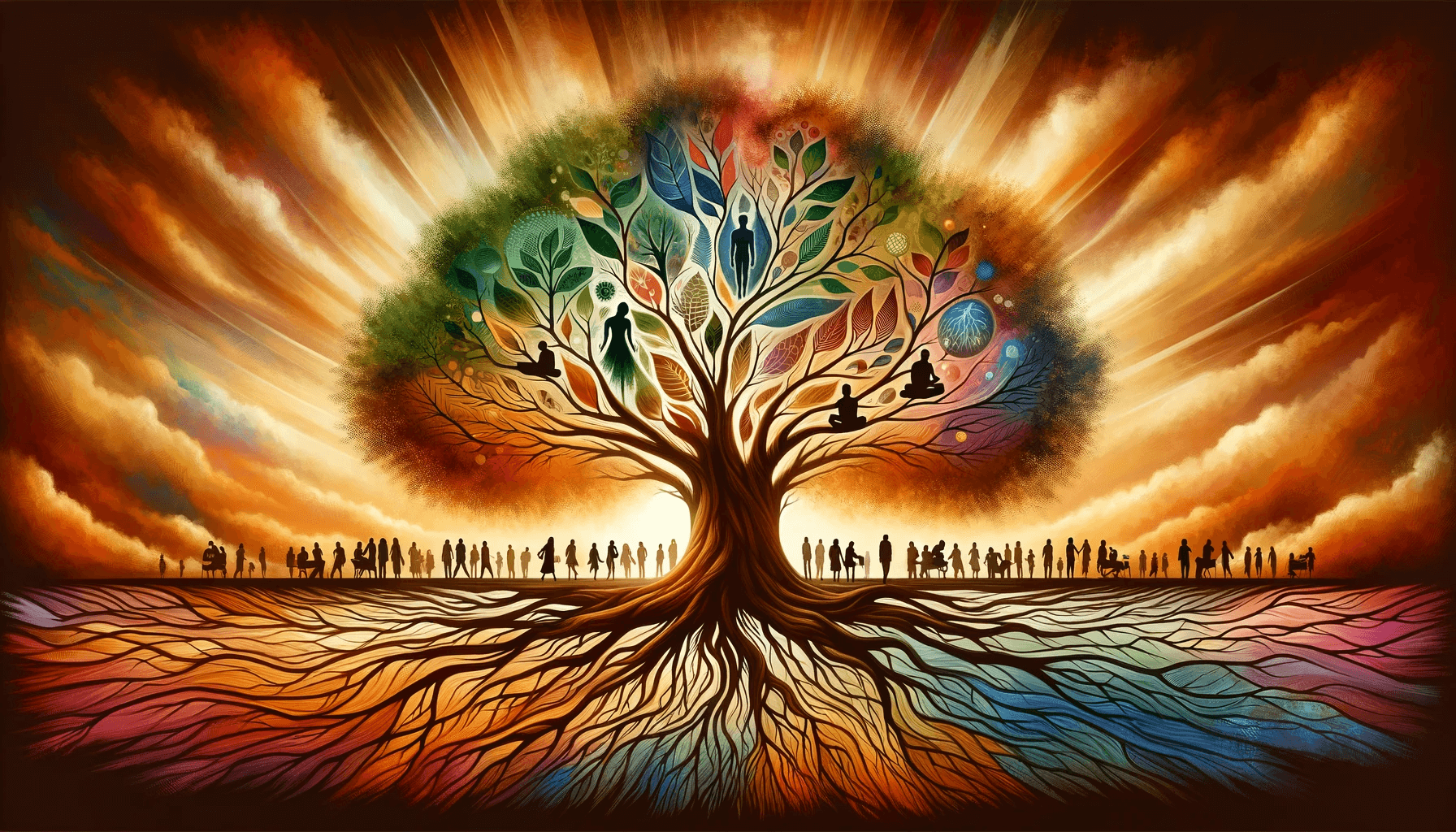Sponsored by The Wealth Compass
Table of Contents
Introduction: Exploring the concept of love
Love, the enigmatic force that has captivated humans for centuries, is a topic that has both puzzled and intrigued philosophers, scientists, and artists alike. It is a profound emotion that transcends cultures, periods, and societal norms. In this article, we embark on a philosophical journey into the depths of the heart, seeking to decode the essence of falling in love.
Love through the ages: A historical perspective.
Throughout history, love has taken on various forms and meanings. In ancient Greece, love was classified into different types, such as Eros, Agape, and Philia. Eros represented passionate love, Agape denoted selfless love, and Philia referred to love between friends. These distinctions highlight the multifaceted nature of love and show that it has always been a complex and ever-evolving concept.
Moving forward in time, the medieval era saw the emergence of courtly love, a romanticized form of love that emphasized chivalry and devotion—this period also witnessed the rise of troubadours who composed songs and poems dedicated to their beloveds. Love became a central theme in literature and art, giving rise to timeless works such as Shakespeare’s Romeo and Juliet.
The biology of love: Understanding the science behind falling in love
Love is not solely a matter of the heart but also a consequence of the brain. Science has revealed that falling in love triggers chemical reactions within our bodies. When we experience the euphoria of love, neurotransmitters such as dopamine and oxytocin flood our brains, creating feelings of pleasure and attachment.
Moreover, studies have shown that love activates the brain’s reward system, similar to the effects of addictive substances. This may explain why love can be both exhilarating and addictive, leading individuals to seek out the presence of their beloved and experience withdrawal symptoms when apart.
Love and philosophy: Different theories on the nature of love
Philosophers have long grappled with the nature of love, offering diverse theories and perspectives. From Plato’s belief that love is the pursuit of beauty and truth to Nietzsche’s view that love is a form of self-mastery, each philosopher brings a unique lens through which to understand this complex emotion.
Existentialist philosophers delve into the existential dimensions of love, emphasizing the freedom and responsibility inherent in choosing to love another person. They argue that love involves a constant negotiation between the desire for individuality and the longing for connection.
Love and psychology: The psychological aspects of falling in love
Psychology sheds light on the psychological processes that occur when we fall in love. The initial stage, known as the “honeymoon phase,” is characterized by intense passion, infatuation, and idealization of the beloved. This phase is often accompanied by euphoria and a sense of being on cloud nine.
As the relationship progresses, the honeymoon phase gives way to a deeper bond characterized by trust, companionship, and mutual support. Psychologists highlight the importance of emotional intimacy and vulnerability in maintaining a long-lasting and fulfilling love relationship.
Love and spirituality: Exploring the spiritual dimensions of love
Spirituality offers another lens through which to explore the essence of love. Many spiritual traditions view love as a divine force connecting all beings and transcending the physical world’s boundaries. Love is a transformative power that can bring profound personal growth and spiritual awakening.
Love is often associated with compassion, forgiveness, and unconditional acceptance in spirituality. It is believed that cultivating love towards oneself and others can lead to a deep sense of interconnectedness and a harmonious way of being in the world.
Love in literature and art: How love has been portrayed in creative works
Throughout history, love has been a prominent theme in literature and art, providing a platform for artists to explore the complexities and nuances of this emotion. From the tragic love stories of Romeo and Juliet to the passionate prose of Pablo Neruda, creative works have sought to capture the essence of love in all its forms.
Artistic representations of love often reflect the cultural and societal norms of the time. They offer glimpses into the human experience of love, evoking a range of emotions and inviting us to reflect on our journey of love.
Love in everyday life: Real-life examples and experiences
While theories and artistic representations provide valuable insights into love, it is in our everyday lives that we truly experience its power. Love manifests in different ways – the love between parents and children, the love between friends, and the romantic love shared between partners.
Real-life examples of love can be found in the small gestures of kindness, the supportive words during difficult times, and the unwavering commitment to one another. These everyday expressions of love remind us of their significance in our lives and the impact they can have on our well-being.
The complexities of love: Navigating challenges and obstacles
Love, despite its beauty, is not without its challenges. Relationships can be fraught with conflicts, misunderstandings, and unmet expectations. Navigating these obstacles requires open communication, empathy, and a willingness to grow together.
In addition, societal factors such as cultural norms, gender roles, and societal expectations can influence how we experience and express love. Recognizing and challenging these influences can lead to a more authentic and fulfilling experience of love.
Love and self-discovery: How falling in love can lead to personal growth
Falling in love can be a transformative experience that leads to personal growth and self-discovery. Love can reveal our vulnerabilities, challenge our beliefs, and push us out of our comfort zones. It invites us to confront our insecurities and learn to embrace our imperfections.
Through the journey of love, we learn about ourselves – our desires, fears, and aspirations. We discover what truly matters to us and what we are willing to sacrifice for the sake of love. In this process, we grow as individuals and deepen our capacity to love and be loved.
Conclusion: Reflecting on the essence of love
As we conclude our philosophical journey into the depths of the heart, we are reminded of the intricate nature of love. Love encompasses our existence’s biological, psychological, intellectual, spiritual, and artistic dimensions. It is a force that transcends time and space, connecting us to life’s profound mysteries.
In our quest to decode the essence of falling in love, we have discovered that love is not merely a fleeting emotion but a profound state of being. It is a journey of self-discovery, personal growth, and connection. So let us embrace the complexities of love and cherish the transformative power it holds in our lives.
CTA: Reflect on your own experiences of love and share your insights in the comments below. How has love shaped your life, and what have you learned from it?




